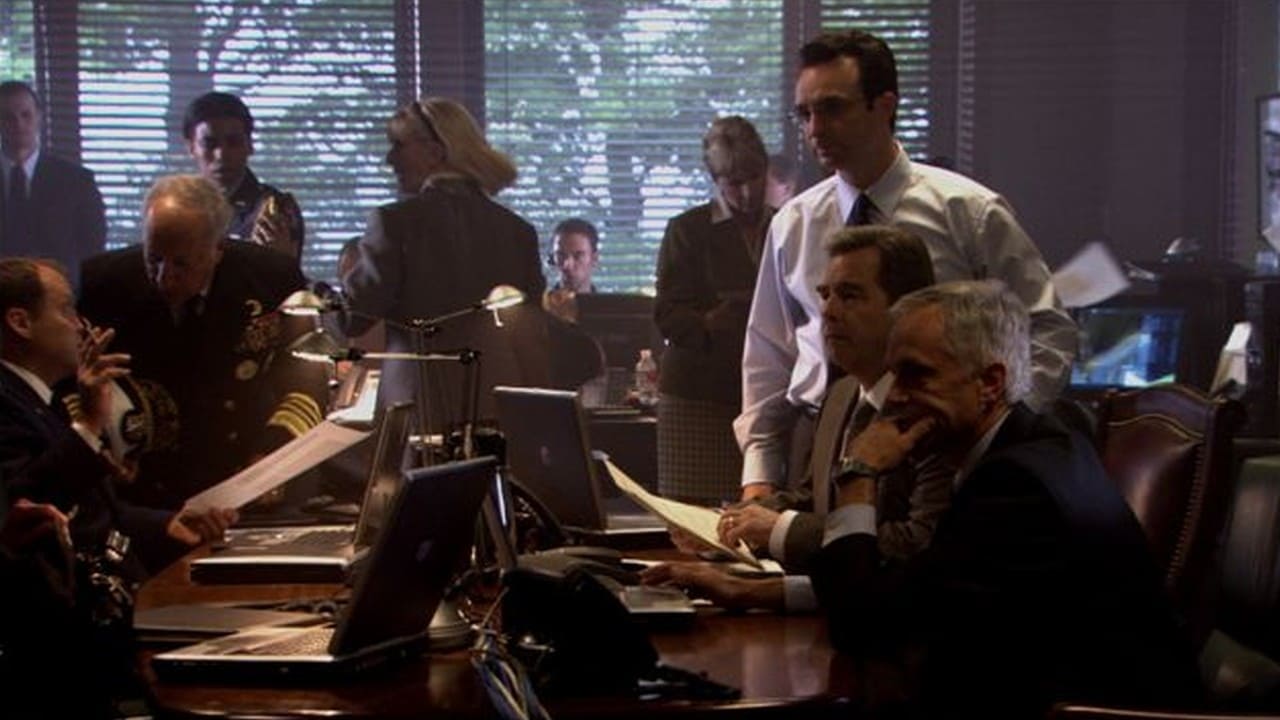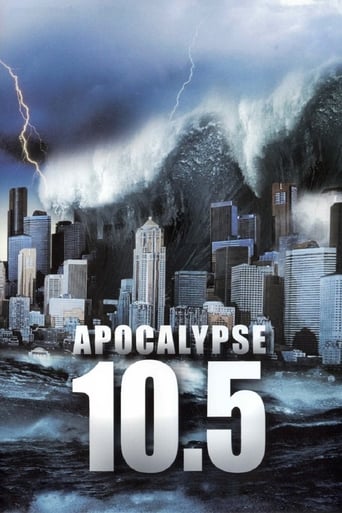

There isn't a whole lot that can be said about the 2006 two-part TV miniseries 10.5: APOCALYPSE that hasn't been said about its 2004 "prequel" (which was just "plain-old" 10.5), except that it's a special effects extravaganza come true, with zero fidelity to scientific plausibility. This time, an all-star cast, including Kim Delaney, Beau Bridges (as the President), Dean Cain, and Frank Langella, find that the catastrophic earthquakes that leveled Los Angeles, San Francisco, and Seattle in the original miniseries are growing so intense that they will eventually split the continental shelf asunder, and cause parts of the United States to separate. This, of course, requires radical and (naturally) implausible action.John Lafia, who both directed and co-wrote both this film and the original, went to great pains to declare both films to be entertainment, not to be believed. He's right, of course; but the same could be said for a lot of similarly apocalyptic mega-disaster movies of the last decade and a half. The hard truth of the matter is that it's just very hard, to get past the level of implausibility that is thrown the viewer's way in 10.5: APOCALYPSE, and how sometimes the acting by an otherwise credible cast veers occasionally towards the laughable. Even previous films like the 1974 sci-fi/disaster opus EARTHQUAKE, or the 1990 made-for-TV film THE BIG ONE: THE GREAT LOS ANGELES EARTHQUAKE (both of which depicted the wiping off the map of Los Angeles), and the later 2009 Roland Emmerich-directed end-of-the-world spectacle "2012", compared to 10.5: APOCALYPSE, are made by this film to look like as if someone on the order of Stanley Kubrick or Steven Spielberg directed them, since the implausibility and the frequently lame dialogue weighs everything down to a large degree. And Lafia's overuse of the zoom lens is especially grating, though, to be honest, this is a two-part TV miniseries, and not a big-screen extravaganza.But then again, you will most likely not be seeing this film for plausibility, since the biggest reason for the existence of 10.5: APOCALPYSE, as was the case with the original, is the incredible special effects destruction sequences, this time involving Las Vegas and Houston; and the rescue sequences are done with a certain measure of credibility. This is, as advertised, a very uneven flick, and probably should rate a zero for plausibility, though to be kind I'll give it a '2'. As a special effects lover's paradise, however, I'm indeed rating it a 10.5, which averages out to a '6' on the IMDb ratings scale (or 6.25, to be on the nose).
... View MoreThis movie is really terrible. It has no redeeming qualities. I didn't see the original 10.5, and I'm not going to after sitting through this mess.Everything's bad: acting, writing, special effects, you name it.But the one thing I absolutely hate about this movie is the camera-work. I think the director of photography has an itchy zoom button finger. The camera keeps zooming in and out, in and out, in and out, etc. If you insist on watching 10.5: Apocalypse, be sure you have Advil and/or a motion sickness bag by your side.Maybe if you and your friends want a bad movie to make fun of, you should check this out. Otherwise, stay away!
... View MoreI won't belabor the same things that others have said (eg, the headache-inducing zooming, the stiff dialog, the poor special effects, the grade 2 science, etc.) Instead, I want to talk about the unrealistic way most people reacted in this move. Remember 9/11? The country stood still for weeks watching the event on TV. But in this movie entire cities (or states?) are destroyed and most people in the rest of the country act oblivious, still going about their normal lives, like the people in Las Vegas. Or how about the earthquake expert who is on the phone with his daughter and says, "I think we're about to have a big earthquake here in Las Vegas in a few seconds" then calmly gets on an elevator(!) while the tremors are going on around him. (Wouldn't he pull the fire alarm? Or take the stairs? Apparently nobody thought of fire alarms in this movie. Or fires.) Or how about the helicopter pilot who is watching the water spill over the top of Hoover Dam and then decides to get a great picture by flying 50 feet below(!) the peak of the dam. (Even flying 200 feet above the dam would be fatal because when the dam breaks the air currents might sink the copter.) In summary, my main gripe is the totally unrealistic human reactions in this movie. Which, I guess, you could blame on the script writer.
... View MoreI always watch disaster movies, but 9 out of 10 they turn out to be disasters themselves. This movie was no exception to that rule. The story is simple (as it should be): Mother Earth shows her wrath and has no mercy doing it. The president of the US (who else, as no other country seems to be affected Hawaii being the US) takes charge and assembles a team of experts to tell what is going on and provide a solution to the problem. No complaints from me there. But why oh why does the daughter of the president have to happen to assist the doctor who treats the wife of the FEMA rescuer who saves his own wife who happens to be in the same building as the father of the scientist in charge who happens to be the discredited geologist who happens to have the 'solution' (no spoiler intended), all supervised by the daughter of the FEMA director who happens to be in direct contact with the president (to come full circle)? To cut it short: suspension of disbelieve is not something thought about thoroughly by the filmmakers.But that's story wise; in a disaster movie you expect disaster to take place, and indeed is does. The special effects and computer graphics are good (for a TV movie at least). No cardboard boxes, or Styrofoam walls flying around (not too obviously anyway), and the CGI is up-to-date. But then again the story line (or rather the suspension of disbelieve) cuts in: the imagery on the computer screens at the geological crisis center are good quality, but unrealistic; the distance people and helicopters are maneuvering from exposed lava or occurring earthquakes is sheer impossible; not to mention the small amount of people that apparently are actually caught in the disaster (admittedly, the number of extras swarming the make-shift medical rescue centers is impressive).Overall the movie shows rather realistic disasters, but that is all it does. There's no real science in the movie, there's no real personal drama (should I care for a person just because he/she is introduced to me?), and there is no satisfactory ending (yeah, yeah, we shall overcome ).
... View More